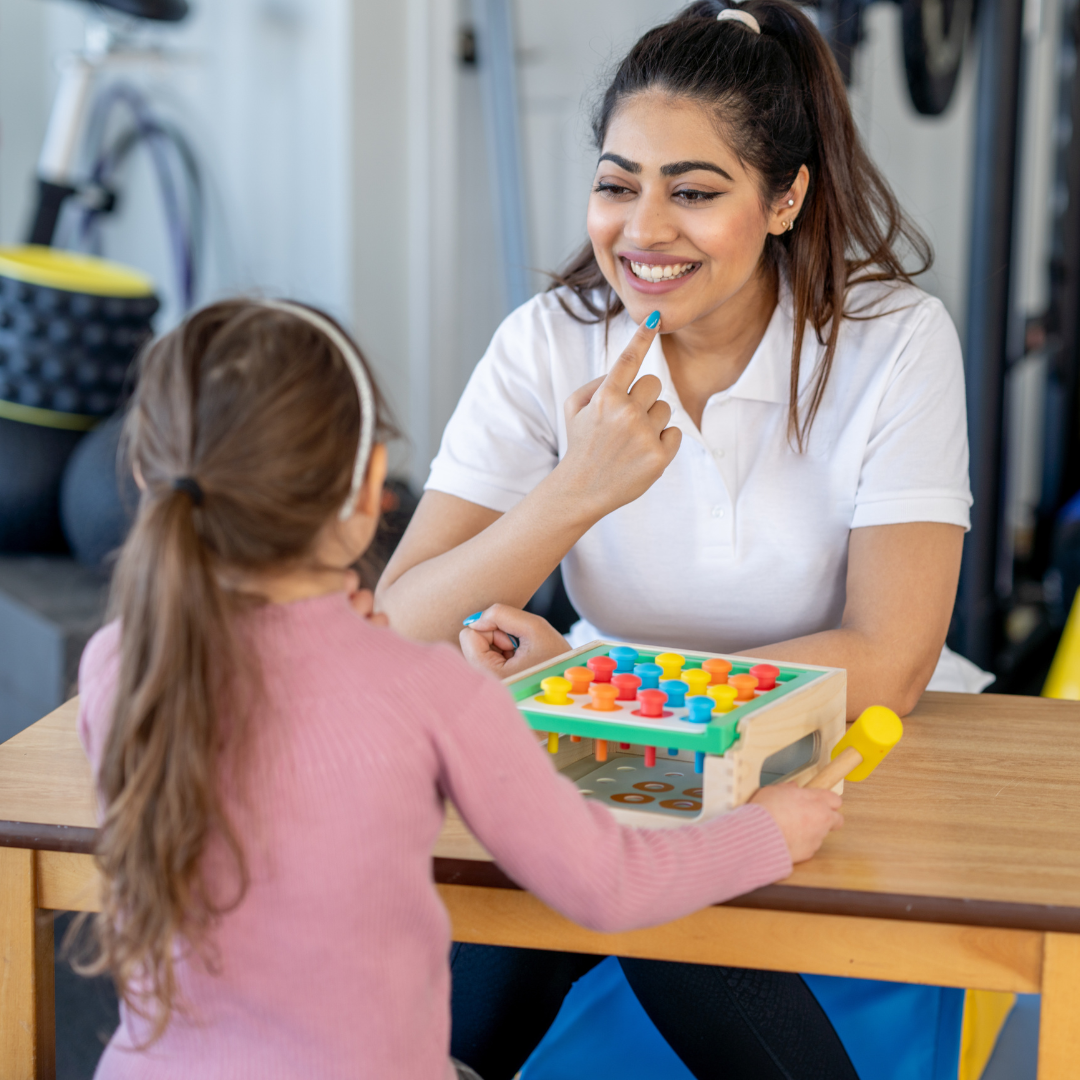K-SLP Teaching Strategies
Combining principles of applied behavior analysis and motor learning
Childhood apraxia of speech requires specific treatment techniques for successful outcomes. Many teaching strategies of applied behavior analysis (ABA) and more specifically, applied verbal behavior (AVB) are aligned with the most current research in CAS. Combined with the principles of motor learning, they provide an effective framework for solid clinical practice to help those with CAS to become effective vocal communicators.
The K-SLP methods follow these best practices and are implemented here at KCC.
Clearly define the behavior that is desired to be established, improved upon, or extinguished.
In this case, it would be to establish vowels and consonants that are not within the child’s repertoire, establish the combinations of vowels and consonants to create syllable shapes/words, or establish the ability to connect words and move into grammatical skills.
Behaviors to extinguish might include the child erroneously adding a schwa “uh” post final consonants. The child might be adding erroneous vowels, consonants, or syllables to words. They also may use filler non-speech vocalizations rather than the new skills that they have developed, to name a few.
Determine the child’s highly preferred toys and activities and have them readily available.
Then, understand how to use these highly preferred items to reinforce the skill areas being taught, providing feedback as to whether or not the utterance was correct, incorrect or getting closer to the target.
Cue before failure. It is important to know the child’s error patterns so they are assisted before making the error and can be reinforced for successes.
Understand how to shape successive approximations of words toward the ultimate goal of perfect articulation.
Many children are not stimulable for the consonants and vowels that are contained in words that are important for them to learn. They will need compensatory placements for some (an easier way to produce complicated consonants or vowels), and simplification of the motor plan for others.
This is where phonological processes are implemented to simplify the motor plan and shape toward the target.
Mix and vary the tasks so as to not actually teach over generalization. This also involves the principles of motor learning, blocked vs. random practice for retention of the skills to be maintained.
Gain as many responses as possible during a session on each goal.
Help the child to use new behaviors functionally in their natural environment. Provide supports to remember new skills and continue to cue speech motor while also scripting language through play. Contrive the environment to provide more opportunities to practice.

CONTACT
We're here to help!
Reach out with questions